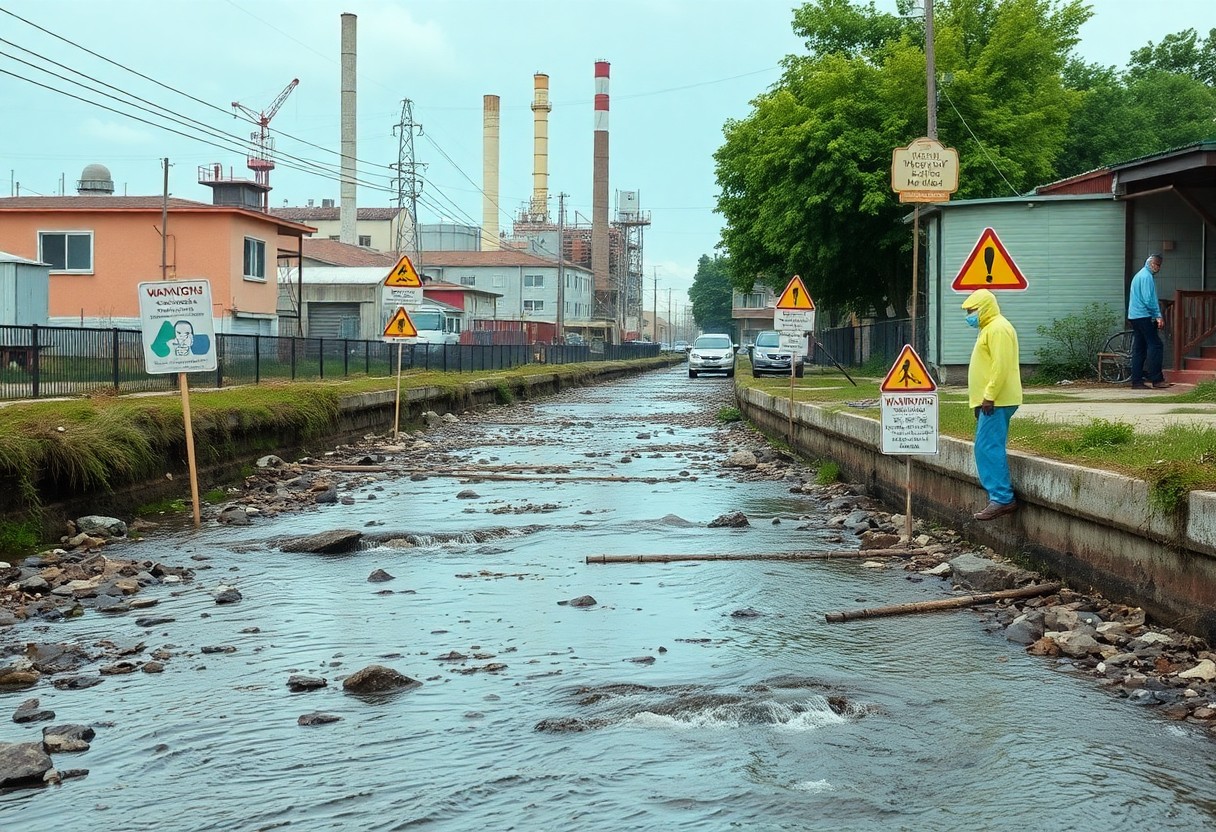Over the past few years, you may have heard about the rising concerns surrounding PFAS (per- and polyfluoroalkyl substances) and their impact on health and the environment. These forever chemicals have been linked to serious health issues, prompting many to seek justice through litigation. In this post, we will answer your most pressing questions about PFAS lawsuits, providing you with the knowledge you need to understand your rights and options. From understanding the legal process to the potential outcomes, we’ve got you covered.
What are PFAS?
PFAS, or per- and polyfluoroalkyl substances, are a group of man-made chemicals widely used for their water- and grease-resistant properties. These substances have gained attention due to their persistence in the environment and potential health risks to humans. As they do not break down easily, PFAS have become commonly referred to as “forever chemicals,” impacting water supplies, wildlife, and human health.
Definition of PFAS
On a fundamental level, PFAS are a class of synthetic chemicals that includes over 4,700 different compounds. These chemicals contain fluorine atoms, which provide their unique properties, such as resistance to heat, water, and oil. Due to their widespread use in various industrial and consumer products, PFAS have accumulated in the environment, raising concerns about their potential health effects.
Common sources of exposure
Any number of everyday items can expose you to PFAS, including non-stick cookware, waterproof clothing, food packaging, and even certain cosmetics. These chemicals are found in products designed for convenience and performance, often without your knowledge. Understanding the sources of PFAS in your life can help you make informed choices to reduce your exposure.
It is necessary to be aware that PFAS can seep into drinking water from various industrial activities, including manufacturing processes and the use of firefighting foams. Additionally, these chemicals might be found in contaminated soil and drainage systems, leading to potential exposure through food grown in those areas. Everyday goods, such as takeout containers or water-repellent fabrics, often contain PFAS, which can unknowingly add to your exposure. Remaining vigilant about these risks helps protect your health and that of your family.
What are PFAS lawsuits?
Now, PFAS lawsuits are legal actions taken against manufacturers of per- and polyfluoroalkyl substances (PFAS), commonly referred to as “forever chemicals.” These chemicals, found in various consumer products and industrial processes, can persist in the environment and accumulate in human bodies, potentially leading to serious health issues. Individuals and communities affected by PFAS contamination seek compensation for damages, medical costs, and the cleanup of contaminated environments.
Legal claims explained
Legal claims in PFAS lawsuits typically revolve around negligence, product liability, or environmental contamination. You may argue that manufacturers failed to warn you about the dangers of PFAS or inadequately managed their disposal, leading to exposure that harms your health or property.
Reasons for filing lawsuits
If you have suffered health problems or property damage due to PFAS exposure, you might consider filing a lawsuit for several reasons. These cases often seek to hold manufacturers accountable for the harmful effects of their products, provide compensation for medical expenses, and promote increased regulatory measures to prevent further exposure.
Plus, by pursuing a lawsuit, you can potentially shine a light on the risks associated with PFAS and raise awareness on an important issue. Achieving a favorable outcome can lead to financial restitution for you and your community, as well as incentivize companies to adopt safer manufacturing practices. Your actions can contribute to a greater push for environmental justice and public health protection.
Who can file a lawsuit?
It is important to understand that anyone who has been adversely affected by PFAS exposure may file a lawsuit. This includes affected individuals, families, and communities who have experienced health complications or environmental damage due to the contamination linked to per- and polyfluoroalkyl substances.
Affected individuals
Clearly, if you or a loved one has suffered from health issues such as cancer, thyroid disease, or other serious conditions that you believe are connected to PFAS exposure, you might have grounds to file a lawsuit. The key factor is demonstrating the link between your health troubles and the harmful chemicals.
Organizations and communities
Affected organizations, local governments, and communities also have the right to file lawsuits if PFAS contamination has harmed public health or the environment. These entities can seek compensation for cleanup costs, health screenings, and other related expenses, demanding accountability from those responsible for the pollution.
It is important to know that organizations and communities can take collective legal action against manufacturers and polluters. By coming together, you can effectively voice your concerns and seek justice for your community. This collective approach can shine a spotlight on the negative effects of PFAS and push for stronger regulations to prevent future contamination, ultimately fostering environmental protection and public health improvement.
What damages can be claimed?
Not all damages claimed in PFAS lawsuits are the same, but many fall into several categories, including medical expenses, emotional distress, and punitive damages. Each case varies based on individual circumstances, but victims often seek compensation for health-related issues caused by PFAS exposure and the impact it has on their overall well-being.
Medical expenses
You have the right to seek compensation for medical expenses incurred due to health issues linked to PFAS exposure. This can include costs for treatment, rehabilitation, medications, and ongoing care related to conditions such as cancer or other serious diseases. Documenting these expenses is critical to building a strong case.
Emotional distress
Damages for emotional distress can also be a significant part of your claim if you have experienced anxiety, depression, or other mental health issues directly related to PFAS exposure and its consequences on your health.
With the potential for long-lasting emotional effects, victims often face challenges such as anxiety about their health or the future. The stress and uncertainty stemming from life-altering diagnoses can contribute to diminished quality of life. Legal compensation for emotional distress recognizes these mental suffering and extends beyond traditional medical payments, acknowledging that emotional and psychological pain must also be addressed for those affected by PFAS contamination.
How to prove exposure?
To prove exposure to PFAS (per- and polyfluoroalkyl substances), you need to establish a clear link between your contact with these substances and any resulting health issues. This often involves demonstrating where and how you were exposed, whether it be through contaminated water, foods, or products. Documenting your history related to these exposure sources can help solidify your claim.
Testing methods
Any effective investigation begins with testing your blood or urine for PFAS contamination. Specific lab analyses can determine the concentration of PFAS in your body, which can support your claims of exposure and potential health risks. It’s advisable to consult with medical professionals who can guide you through the testing process.
Gathering evidence
Little evidence will be useful in your case if it isn’t collected thoughtfully. You should focus on gathering documentation, such as medical records, past tests, and environmental studies that highlight the presence of PFAS in your area. Additionally, keeping detailed logs of your exposure history, including dates, locations, and activities, will strengthen your case.
You can enhance your evidence gathering by obtaining health assessments from professionals who can link your condition directly to PFAS exposure. Make sure to collect police reports or environmental assessments that indicate possible contamination in your water supply or surrounding area. Engaging with local community organizations that focus on PFAS pollution could provide valuable insights and support your claims with witness testimonies. This comprehensive approach will help you build a stronger foundation for your lawsuit.
What companies are involved?
For those concerned about PFAS lawsuits, it’s imperative to know which companies are associated with these substances. Major corporations in the chemical, manufacturing, and consumer goods sectors are often implicated, having produced or utilized PFAS in their processes. Your understanding of these companies can provide insight into how widespread PFAS contamination has become and the potential impacts on communities and consumers.
Major manufacturers
Some of the leading manufacturers include chemical giants that have produced PFAS compounds for various applications, such as textiles, firefighting foams, and food packaging materials. These companies have faced significant scrutiny and legal challenges due to their roles in PFAS production and environmental contamination.
Notable cases
Even within the landscape of PFAS lawsuits, certain cases stand out for their implications and outcomes. The litigation involving DuPont and 3M has garnered significant attention, illustrating the serious health impacts associated with PFAS exposure and the responsibility of major corporations to address these issues.
Plus, you should be aware of the noteworthy outcomes in legal actions against these companies. Case studies like DuPont’s settlement, which involved millions of dollars in compensations and cleanup efforts for contaminated sites, highlight the seriousness of PFAS-related health risks. The recognized connection between PFAS exposure and health issues such as cancer and immune system effects has brought about a wave of legal actions. Understanding these cases emphasizes the need for corporate accountability and informs you of the ongoing fight for environmental justice.
How long do lawsuits take?
Unlike many other legal cases, PFAS lawsuits can be lengthy and complex due to the extensive evidence and scientific research involved. On average, these lawsuits can take several months to years to resolve. Factors such as the number of plaintiffs, the type of evidence presented, and court schedules can all contribute to delays in the legal process.
Typical timeline
You should anticipate a PFAS lawsuit proceeding through several phases, starting with filing the complaint, which can take weeks to months. Afterward, the discovery phase often spans several months as both parties gather evidence. Finally, if the case goes to trial, it could take additional months or even years to reach a resolution.
Factors affecting duration
If you are involved in a PFAS lawsuit, several factors can impact its duration:
- Number of plaintiffs involved in the case
- Complexity of the scientific data required
- Court schedules and procedural delays
- Settlement negotiations and their length
Thou should be prepared for unforeseen delays as your lawsuit progresses, emphasizing the importance of patience.
Timeline delays in PFAS lawsuits often result from multiple intertwined elements that can lengthen the process significantly:
- Discovery issues and unresolved motions
- Expert testimonies requiring extensive preparation
- Potential appeals that can elongate the case
- Defendant’s resources impacting case timelines
Thou may experience a prolonged resolution, so staying informed about your specific case is key.

What is the settlement process?
Once again, the settlement process for PFAS lawsuits involves several steps where both sides negotiate terms to reach an agreement. After filing a lawsuit, the parties may engage in pre-trial discussions, exploring potential settlement options that can avoid lengthy litigation. If an agreement is reached, it often culminates in a formal settlement document outlining the terms and compensation agreed upon. If no settlement is achieved, the case may proceed to trial.
Negotiation stages
You will typically encounter multiple negotiation stages during a settlement process. Initially, both parties share their evidence and arguments, allowing for an assessment of each side’s position. Following this, informal discussions often give way to more structured negotiations, where deadlines and terms are established. Experienced mediators may be involved to facilitate an amicable resolution, ultimately aiming to avoid the uncertainties of a trial.
Distribution of funds
What happens to the funds once a settlement is reached can significantly impact you and others affected. Once an agreement is finalized, funds are distributed according to the terms set in the settlement. This may involve establishing a trust fund for ongoing medical monitoring or compensation for damages, ensuring that each claimant receives an amount based on their individual circumstances.
Stages in the distribution process can vary. First, the settlement funds are often deposited into an escrow account, managed by legal representatives or a third-party administrator. Following this, a thorough review allows for fair distribution to each claimant, considering factors such as medical expenses, property damage, and emotional distress. It is crucial to ensure transparency and accountability throughout this process so that those affected receive their rightful compensation.
Are there class-action lawsuits?
All across the country, there are ongoing class-action lawsuits related to PFAS contamination. These collective legal actions allow individuals affected by similar circumstances to join forces and seek compensation from manufacturers or responsible parties. Class-action suits can often lead to substantial settlements, holding corporations accountable for environmental and health damages linked to PFAS exposure.
Definition of class-action
Assuming you are unfamiliar, a class-action lawsuit is a legal proceeding where a group of individuals with similar claims against a defendant join together to file a single lawsuit. This approach is typically used when the individual claims are too small to warrant separate lawsuits, making it more efficient and cost-effective for claimants to participate as a group.
Recent notable examples
Now, several notable class-action lawsuits have emerged in the past few years surrounding PFAS, shedding light on the widespread impacts of these chemicals. One example includes a case against a major chemical manufacturer whose products allegedly contaminated the water supply in various communities, affecting thousands of residents.
To illustrate, a class-action lawsuit in Haverhill, Massachusetts, represented over 30,000 residents who claimed that their water was contaminated by PFAS from nearby industrial operations. This lawsuit aimed to hold the responsible companies accountable for the health issues linked to PFAS exposure, such as cancers and reproductive health problems. The settlement not only sought financial compensation but also required the companies to implement measures to prevent future contamination. Such high-profile cases of PFAS lawsuits are paving the way for greater public awareness and accountability regarding environmental safety.
Final Words
Ultimately, understanding the intricacies of PFAS lawsuits is imperative for anyone affected or concerned about these persistent chemicals. By familiarizing yourself with the top 10 questions surrounding PFAS, you can make informed decisions and navigate potential legal actions more effectively. Whether you’re seeking compensation, understanding health risks, or simply gathering information, staying educated will empower you in this complex landscape. Your awareness of these issues can lead to more meaningful discussions and actions, ensuring your rights and health are prioritized.



















